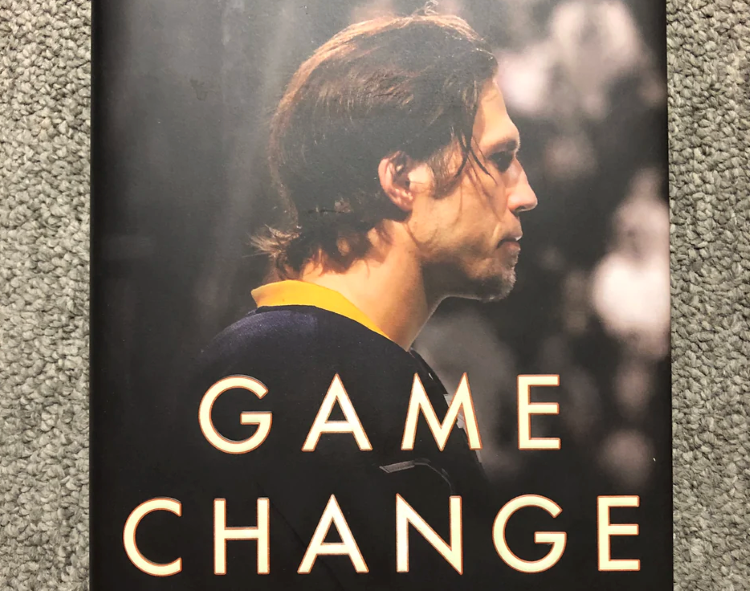Ken Dryden, superstar goalie of the Montreal Canadiens and Team Canada in the 1970s, passed away last month at age 78. Far too young, but cancer does that with distressing regularity.
Dryden was a childhood hero for me. Standing tall in his crease, staring down the big bad Boston Bruins and guiding the fleet and elegant Habs to victory, he won six Stanley Cups in his short eight-year NHL career. He also backstopped Team Canada 1972 to its narrow victory over the upstart Soviet team – a series that heralded exciting international competition to come. Dryden (and fellow Team Canada hero Paul Henderson, who lived just around the corner from me at the time) yanked me out of the library and onto the rink to become a subpar hockey player but enthusiastic life-long fan of the game.
But Dryden was more than just one of the world’s best hockey players. He retired from hockey early to study law and to lead in business and politics at the highest levels. And he became an acclaimed author, beginning with The Game in 1983. Not all of his books were about hockey – he also wrote about Canadian identity in Becoming Canada (2010) and about the lives of his high school classmates in The Class (2024).
His fifth book – Game Change (2017) – stands out for me. Subtitled The Life and Death of Steve Montador, it addresses Montador’s death from chronic traumatic encephalopathy (CTE) – linked to repetitive head trauma that occurs in violent contact sports such as hockey. Dryden showed how the hockey/sports culture that Montador grew up with encouraged him (and his coaches) to downplay the damage from countless hits and fights, which led to massive health issues and a young death at the age of 35. In Game Change, Dryden tells a disturbing story rooted in his deep knowledge of the game, associated legal and liability issues, and extensive research into the scientific and medical understanding of CTE.
CTE was then and is still today a mysterious ailment that can be inferred from a variety of cognitive, behavioral, and motor symptoms observed only years after the traumas occurred. Definitive diagnosis is possible only by examining brain tissue after death.
I remember listening to Dryden being interviewed about the book, and in a follow-up article he wrote:
“The story of science – knowing better today than yesterday, but of never knowing for sure, because science never knows for sure, because what it knows today is only a placeholder for what it will know tomorrow.
But games are played today – so what do we do?
Based on the best science we have at this moment – today – what decisions do we take?”
For all his accomplishments, Ken Dryden was not a scientist. But he demonstrated a deep understanding of the nature of science in addressing complex and multi-faceted issues. There are two very important messages here.
Message #1: The “story” of science – science never knows for sure, because what it knows today is only a placeholder for what it will know tomorrow.
So critically true, and so poorly understood. Scientists do what they do in order to improve scientific knowledge – add to the database, develop new concepts, refute old ideas tested and falsified by new work. The body of scientific knowledge is never static – it evolves constantly as new data are added, new interpretations developed, and old interpretations modified or superseded.
Scientific knowledge advances because it is supported only by fact and reasoned interpretation – not by popularity or a vote. The concept of “scientific “consensus” is not science – it is a marketing tool to promote certain views that the promoter would like to be seen as “scientific”.
The theory of evolution is a great example. Developed over decades by Darwin and others in the 1800s and tested in popular society and the courts in the early 20th century, the concept of evolution was well established and taught as “established science” when I was a public school student. But in the 1970s, our understanding of evolutionary mechanisms underwent a massive change with the emergence of “punctuated equilibrium” – the concept that many evolutionary changes do not occur globally and gradually, but more abruptly within isolated populations before emerging on the global scene and taking over quickly if they offered improved chances for survival.
The concept of evolution survived – but changed radically as new data and interpretations revised our understanding of how it actually worked.
Message #2: Based on the best science we have at this moment – today – what decisions do we take?
Scientific knowledge is key to informing society and policymakers on the best policies and action plans in many areas. But because scientific knowledge advances constantly, policies and actions may be end up being incorrect or poorly designed as new scientific knowledge is developed.
Dryden’s analysis of CTE and sports trauma is a great example – in the good old days after a hit to the head, players would give their heads a shake, sniff the smelling salts, and get back out there. The tragedies suffered by Montador and many other athletes provided the data to advance our understanding of head trauma and concussions to the point that today, leagues employ concussion spotters to take players out of a game for testing even if the player and coach wants them to play on. Better to miss a few shifts or games than to suffer Steve Montador’s fate.
Injury policies and action plans changed in response to evolving scientific knowledge. The old policies were based on knowledge from the past. Sports authorities made different decisions based on new information.
Another critical example is the science around climate and climate change. The fundamental earth sciences behind climate, particularly atmospheric physics, are complex, and the playing field (the whole earth!!) is vast. Concepts, datasets, and interpretations are constantly evolving – but are challenged by limitations like those around concussions and CTE. In neither field of study can we run targeted experiments to obtain quick and definitive results. We can model inputs, model processes, and model a range of most likely outcomes, but our models are limited by inadequate datasets, incomplete understanding of processes, and the many assumptions we must make in which we cannot quantify significant inputs.
So, of course, the scientific knowledge around climate determination and change is itself changing – all the time. Many things we “knew” when we, say, designed a climate model in 2015, have changed with the acquisition of 10 years of better-quality data and the results of thousands of relevant research projects. Decisions made and targets set based on 2015 scientific knowledge need serious and ongoing reconsideration based on the additional decade of knowledge we have gained.
Here is one example – many climate models were run and scenarios/predictions developed based on the assumption that anthropogenic greenhouse gas (GHG) emissions would continue to accelerate through much of the 21st century – the so-called RCP (Representative Concentration Pathway) 8.5 scenario. We realize now that while emissions continue to grow, they are growing at a much slower rate, meaning that models should be regenerated and outcomes/recommendations revised accordingly. Roger Pielke Jr. has written extensively on this topic – see, for example, Climate Science is About to Make a Huge Mistake.
So, what should we being doing differently? When considering policy around climate and other important issues that rely upon scientific information, policymakers must understand some basics:
-
- Scientific knowledge is constantly changing. What we “knew” yesterday will be superseded by today’s discoveries.
- Scientific knowledge is determined by facts and data, appropriately interpreted by people with expertise and experience – meaning there is no such thing as “scientific consensus”. It does not matter if someone tells us 97% of scientists believe something if that something does not incorporate relevant facts and observations.
- There are many people with various preconceived notions and interests who will invoke their own biased take on “the science” to promote their beliefs. Policymakers cannot sift through promoter “science” on their own – they need to engage high-quality scientific advisers to help them understand what is important and what is not.
Most of all, we must realize that science and scientific knowledge are dynamic. Decisions, actions, and policies based on science must also be dynamic, changing to reflect what we know today. Ken Dryden showed us how that happened in sports medicine. It is paramount that it also happens in climate and environmental policies.
(Brad Hayes, BIG Media Ltd., 2025)


